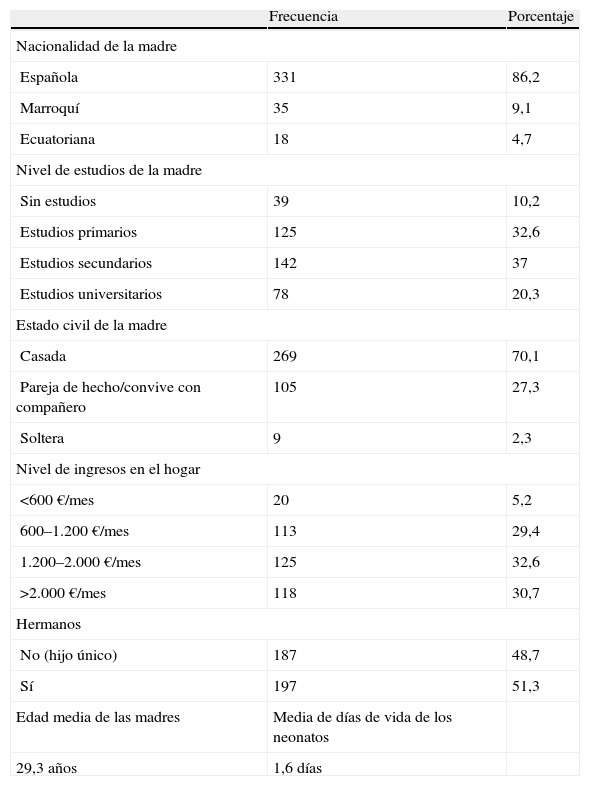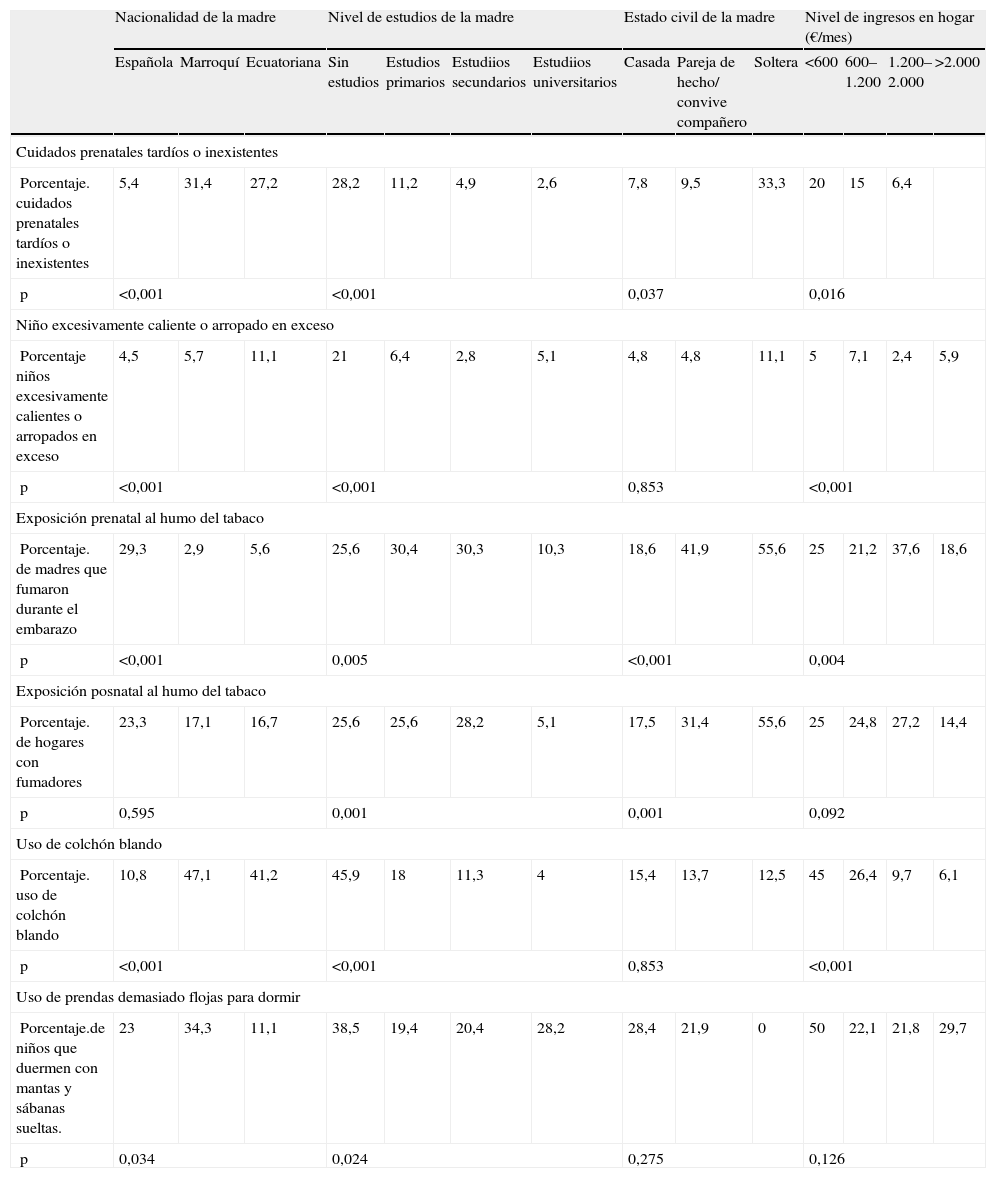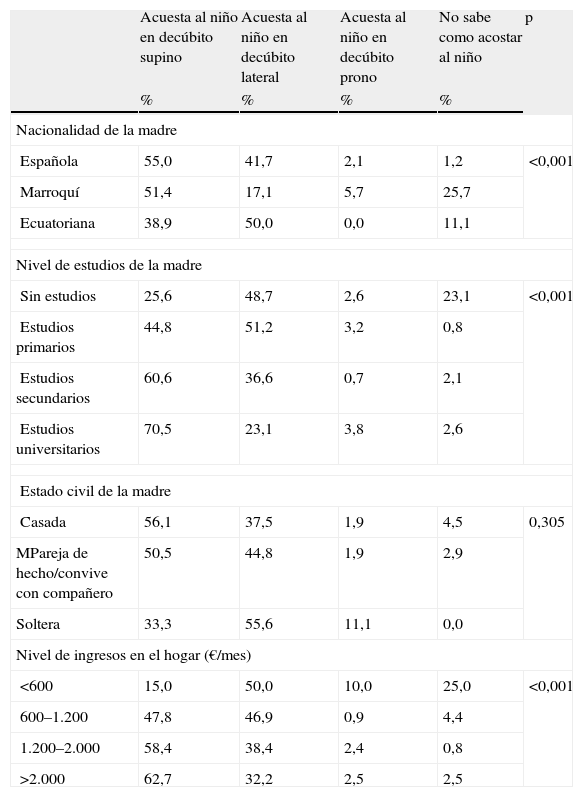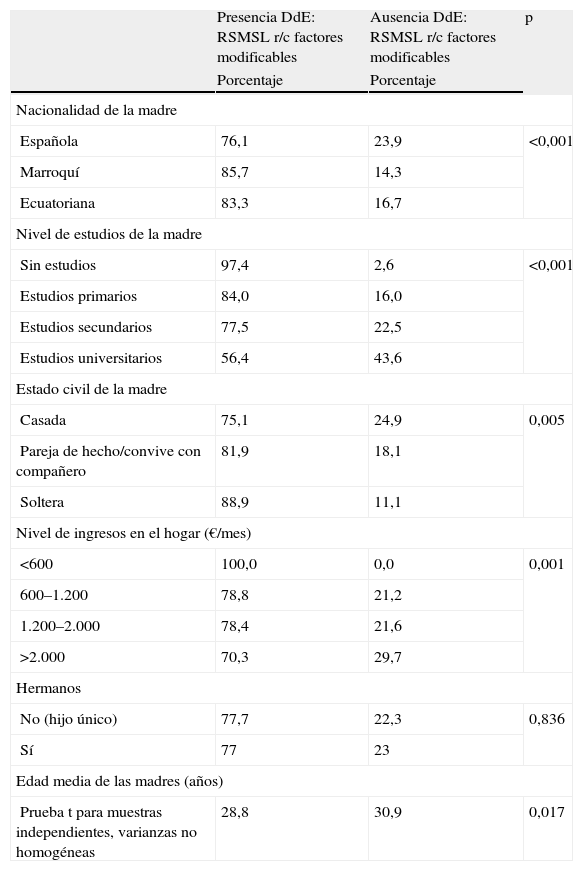Medir la prevalencia de los factores de riesgo modificables del diagnóstico de enfermería riesgo del síndrome de la muerte súbita del lactante (RSMSL), y relacionarla con las características sociodemográficas de la muestra.
Material y métodosMuestra compuesta por 384 madres (españolas, marroquíes y ecuatorianas). Los datos se recogieron en la planta de maternidad del Hospital Sta. María del Rosell de Cartagena (Murcia) entre junio y noviembre de 2007, a través de un cuestionario que incluía preguntas sobre los hábitos y prácticas de crianza, definidos como factores de riesgo modificables por la taxonomía NANDA-I. Para el análisis estadístico se utilizó el test de la χ2 para variables cualitativas, y la t de Student y análisis de la varianza para variables cuantitativas.
ResultadosUn 77,1% (297) de los neonatos fue diagnosticado de RSMSL relacionado con factores modificables. Destaca la elevada prevalencia de algunos factores de riesgo modificables como la elección de la posición de decúbito lateral para acostar al recién nacido 39,8% (153), o el haber fumado durante el embarazo 25,7% (99). Se encontraron relaciones estadísticamente significativas (p<0,001) entre la presencia del diagnóstico y la nacionalidad de las madres, su nivel de instrucción y el nivel de ingresos en el hogar.
ConclusiónLa elevada prevalencia entre los neonatos de algunos factores de riesgo modificables, hace necesario reforzar la información acerca de determinados hábitos y prácticas de crianza relacionados con la prevención del SMSL, no sólo en las consultas de enfermería Infantil sino también durante el embarazo y primeros días de vida del recién nacido.
To measure the prevalence of modifiable risk factors for the nursing diagnosis of risk of sudden infant death syndrome (RSIDS), and to establish the association between the prevalence found and the sociodemographic characteristics of the sample.
Material and methodsThe sample was composed of 384 mothers (Spaniards, Moroccans and Ecuadorians). Data were collected in the maternity ward of Sta. Ma del Rosell Hospital in Cartagena (Murcia) from June to November 2007 through a questionnaire containing items on sociodemographic variables and questions about upbringing habits and practices, which are defined as modifiable risk factors by the NANDA-I taxonomy. In the statistical analysis, the Chi-square test was used for qualitative variables and Student's t-test and analysis of variance were used for quantitative variables.
ResultsA total of 77.1% of newborns were diagnosed with RSIDS related to modifiable risk factors. Notable was the high prevalence of risk factors such as the choice of side-lying position to put the newborn to bed in 39.8% (153) and smoking during pregnancy in 25.7% (99). Statistically significant associations were found (p<0.001) between the diagnosis of RSIDS and the mother's nationality, educational level and household income.
ConclusionThe high prevalence of some modifiable risk factors among newborns raises the need to provide more information about upbringing habits and practices for SIDS prevention, not only in Infant Nursing Consulting Rooms but also throughout pregnancy and in the first days of life of the newborn.
Artículo
Comprando el artículo el PDF del mismo podrá ser descargado
Precio 19,34 €
Comprar ahora











